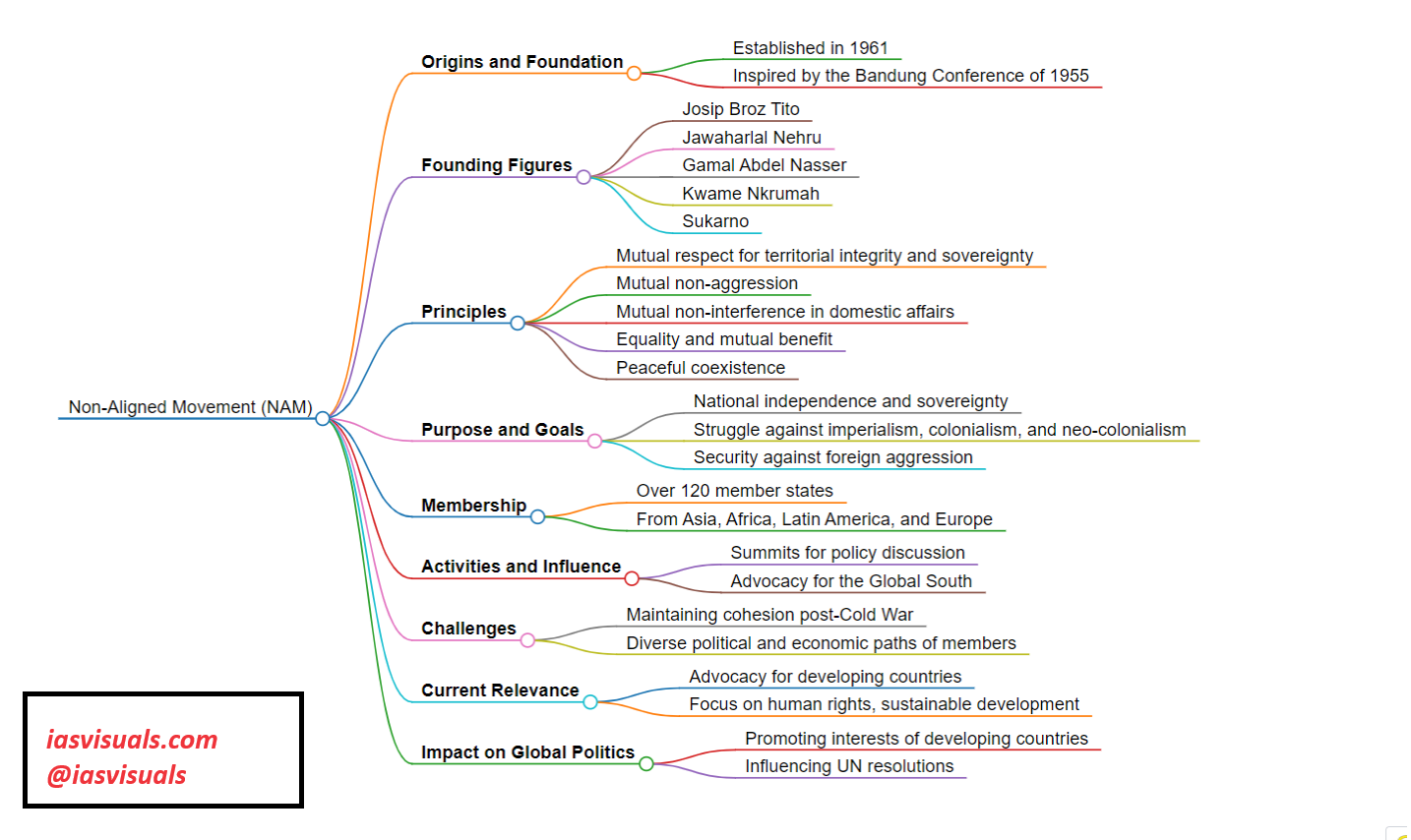The Non-Aligned Movement (NAM) is a significant international organization with a rich history and guiding principles aimed at preserving the independence, sovereignty, and territorial integrity of its member states. Here are the key points about the NAM:
Origins and Foundation: The Non-Aligned Movement was officially established in 1961, during the Cold War, at the Belgrade Conference. Its formation was largely inspired by the Bandung Conference of 1955, which was a meeting of Asian and African states, most of which were newly independent.
Founding Figures: Key figures in the establishment of the NAM included Josip Broz Tito of Yugoslavia, Jawaharlal Nehru of India, Gamal Abdel Nasser of Egypt, Kwame Nkrumah of Ghana, and Sukarno of Indonesia. These leaders were instrumental in shaping the movement’s goals and principles.
Principles: The movement is founded on several key principles, including mutual respect for each other’s territorial integrity and sovereignty, mutual non-aggression, mutual non-interference in domestic affairs, equality and mutual benefit, and peaceful coexistence. The principles are designed to ensure that member states do not become pawns in the global strategies of the major powers.
Purpose and Goals: The primary aim of the NAM is to ensure the national independence, sovereignty, territorial integrity, and security of non-aligned countries in their struggle against imperialism, colonialism, neo-colonialism, racism, and all forms of foreign aggression, occupation, domination, interference, or hegemony.
Membership: The movement has grown significantly since its inception and now includes over 120 member states from Asia, Africa, Latin America, and Europe. The members are united by their shared goals of independence from major world powers and their commitment to the principles of non-alignment.
Activities and Influence: The NAM holds summits every few years, where member states discuss and coordinate their policies and approaches to global issues. Despite its diverse membership and varying interests, the NAM has been a voice for the Global South, advocating for issues such as decolonization, peace, and economic development.
Challenges: The NAM has faced challenges in maintaining cohesion among its members, especially with the end of the Cold War and the diverse political and economic paths taken by its members. The relevance and influence of the NAM in the post-Cold War era have been subjects of debate.
Current Relevance: Today, the NAM continues to advocate for the interests of developing countries, focusing on issues like human rights, sustainable development, and the fight against imperialism and neocolonialism. It seeks to play a role in global governance by promoting multilateralism and challenging unilateral actions by more powerful states.
Impact on Global Politics: While its influence has fluctuated, the NAM has played a significant role in promoting the interests of developing countries, influencing United Nations resolutions, and contributing to discussions on international peace and security, economic development, and decolonization.
The Non-Aligned Movement, despite the changing dynamics of international relations, remains a crucial platform for countries seeking to assert their independence and influence global governance without aligning with major power blocs.

